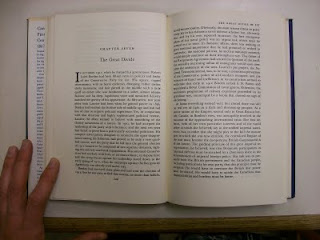
The archivist showed me what seems to be a Latin copy of Hartmann Schedel’s Nuremberg Chronicle, printed by Anton Koberger in 1493. This famous piece of incunabula was hidden in plain site for many decades in an odd collection of rarities assembled by William Inglis Morse and donated to Acadia between 1926 and 1931 (other parts of his library went to Dalhousie and Harvard). This book, a history of the world, is famous for its integration of text and illustration. It has over 1800 woodcuts, some extending across page spreads. This copy seems poorly printed at times compared to other sheets from the incunabula period that I have seen, and hand colouring infrequent. If you’d like to see high-resolution images of pages from a fully coloured copy, click here.

Once the special collections room was closed for the evening, I went to the general stacks and found this nice endpaper in a copy of Jack Shadbolt’s Mind’s I; Poems &: Drawings, published by M&S in 1973. I’d guess by the style that it was drawn by M&S house designer Frank Newfield, not Shadbolt.

I made a stop on the way home at my neighbourhood antiquarian bookseller’s, The Odd Book. I took the opportunity to extol the virtues of the understated text and jacket design of a copy of Donald Creighton’s Canada’s First Century, 1867–1967, published by Macmillan of Canada in 1976. Even in a small town, it is possible to find examples of both old and beautiful design if you know where to look and what you are looking for.





No comments:
Post a Comment